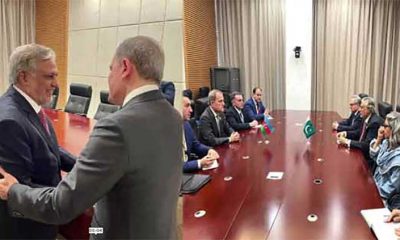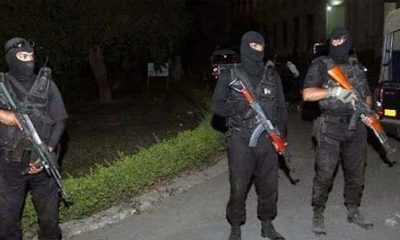China should be able to meet standards set out in a major trans-Pacific trade pact, trade experts say, forcing members to make a politically uncomfortable decision on whether to let Beijing join a deal created to counter its growing influence.
Britain joined the Comprehensive Progressive Trans-Pacific Partnership (CPTPP) at a meeting in Auckland this month just over two years after its application, clearing the way for members to consider others from China, Taiwan, Ukraine, Costa Rica, Uruguay and Ecuador.
China’s application, by far the biggest economy, is next in line if they are dealt with in the order they were received, although that is not a given.
When asked whether there was a time frame for when the next applications would be considered, CPTPP host nation New Zealand’s Trade Minister Damien O’Connor said: “No.”
The free trade agreement has its roots in the US-backed Trans-Pacific Partnership, developed in part to counter China’s growing economic dominance. The US pulled out under President Donald Trump and it was reborn as the CPTPP with members including close US allies Japan, Australia and Canada.
China wants to be part of the CPTTP because the ruling Communist Party places a lot of stock in its economic performance, which has suffered recently due to various trade restrictions, and because it sees the bloc’s high accession requirements as fresh impetus for economic reform at home, analysts say.
The absence of the world’s largest economy incentivises China to meet the high entry requirements as “the hidden motive” for Beijing is to “defeat the scheme by the US to use the CPTPP as a way to contain China,” said Henry Gao, a law professor at Singapore Management University.
A Chinese Ministry of Foreign Affairs spokesperson said its application was in line with efforts to deepen reform and expand trade cooperation with other countries.
The CPTPP requires countries to eliminate or significantly reduce tariffs, make strong commitments to opening services and investment markets and has rules around competition, intellectual property (IP) rights and protections for foreign companies.
“The conventional wisdom is… that ‘Oh well, it’s too high level and China with its state-owned enterprises (SOE) couldn’t get into that agreement. So therefore it’s not going to happen.’ I think that is completely wrong,” Tim Groser, a former New Zealand trade minister and chief trade negotiator said.
He said there was a desire by at least some in China to use the agreement to drive reform such as in SOEs.
However, China offers SOEs subsidies and could struggle to meet the requirement to be an open and market-driven economy. And while IP rights are improving, there continue to be high-profile cases of IP theft from Western companies.
The CPTPP also has a focus on digital trade and prohibits forcing foreign companies to store local data in country – for example, in China. Beijing’s data sovereignty laws have only become tighter in recent years.
“If a country’s economies rules are really quite far apart from what CPTPP says, then inevitably there’s quite a big question about whether they could undertake really, really massive reforms,” said Graham Zebedee, Britain’s CPTPP chief trade negotiator, without commenting specifically about China’s application.
Trade experts noted the pact does have exemptions, such as protections for national security, and China showed it could liberalise when it joined the World Trade Organization.
“The CPTPP is important for us. Not because it’ll be easy but exactly because it will be difficult and tough,” China’s Ambassador to New Zealand Wang Xiaolong said in a recent speech. He said potential accession was an “impetus to the domestic reforms” that would be undertaken.
Ultimately the decision will be political rather than technical, because a deal to allow a new entrant must be agreed upon by all members. Australia, for example, has said it would not endorse China’s application while Beijing continues to block the import of Australian goods including wine and barley.
Furthermore, the US, Australia, Britain, Canada, Japan, and New Zealand last month signed a statement condemning economic coercion that was widely seen as referring to China’s behaviour at a time when many countries are looking to lessen supply chains’ reliance on Beijing.
Hopes also remain that the US might reconsider its early CPTPP withdrawal, creating a dilemma for signatories given their veto power and the risk China, if admitted, could block a future US entry.
“I think Japan, Australia, Canada and Mexico, they have to all act on their own. The US walked away, so they shouldn’t really try to restrict others to talk with other partners,” said Wang Huiyao, president of the Center for China and Globalization think tank and a former member of the Chinese People’s Political Consultative Conference political advisory body.
When asked if the US would reconsider joining the CPTPP, US Secretary of State Antony Blinken told reporters in Wellington last week it is focused for now on the Indo-Pacific Economic Framework, which aims to improve supply chains and business conduct but is not a free trade agreement.
China has backed a rival Asia-Pacific trade pact called the Regional Comprehensive Economic Partnership (RCEP), which excludes the US and involves cutting tariffs rather than opening up economies and dictating labour and environmental standards as the CPTPP does.
For CPTPP members, China’s application is not the only political dilemma. Taiwan is also seeking to join the pact, in a move opposed by China that member trade negotiators remain unsure about.
“It’s a consensus. So ultimately it depends on what everyone decides at the table,” said Natalie Black, Britain’s trade commissioner for Asia Pacific.
Post Views: 144


 Sports3 months ago
Sports3 months ago
 Fashion2 months ago
Fashion2 months ago
 Sports3 months ago
Sports3 months ago
 pakistan3 months ago
pakistan3 months ago
 pakistan3 months ago
pakistan3 months ago
 World2 months ago
World2 months ago
 World2 months ago
World2 months ago
 Sports2 months ago
Sports2 months ago



















